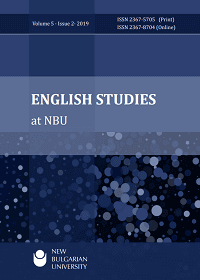Metadiscourse, Writer Identity and Reader Construction among Novice Arabic-Speaking ESL Writers
Metadiscourse, Writer Identity and Reader Construction among Novice Arabic-Speaking ESL Writers
Author(s): Christina A. DeCourseySubject(s): Social Sciences, Language and Literature Studies, Education, Foreign languages learning, Semiotics / Semiology, Theoretical Linguistics, Phonetics / Phonology, Morphology, Syntax, Lexis, Semantics, Pragmatics, Historical Linguistics, Comparative Linguistics, Other Language Literature, Higher Education , Translation Studies, Theory of Literature, Phraseology
Published by: Нов български университет
Keywords: metadiscourse; systemic functional linguistics; content analysis; transitivity analysis; English for Academic Purposes; writer concepts; reader concepts
Summary/Abstract: This study used qualitative analyses to explore novice ESL writers’ concepts of writers, readers and texts. Metadiscourse studies tabulate frequencies of discourse markers in order to characterise the different ways novices and experts, native-speakers and non-native speakers, construct themselves as writers, engage with their readers, and guide readers through their text. But the picture created by these descriptive statistics lacks many content areas voiced by student writers, including their reliance on visual content, and their emotions. Student writers’ experiences in a world saturated by visual media and marketing views are also factors shaping how they construct their identities as writers, the identities of their projected readers, and how they understand what they are doing when writing text. This study used content and transitivity analyses to assess how Arabic native-speaker novices understand themselves as writers, how they project their readers’ identities, and how they try to engage them. Results show that visuals are indistinct from text, and verbs of seeing are used for reader understanding, in novice writers’ sense of their texts, and how they understand engaging the reader. These novices have a demographically granular assessment of audiences, but aim to please readers with expected content rather than challenge them with academic content, and they downplay important elements of teacher talk, syllabus and second-language (L2) composition instruction, particularly data, research, structure and language.
Journal: English Studies at NBU
- Issue Year: 5/2019
- Issue No: 2
- Page Range: 284-307
- Page Count: 24
- Language: English

